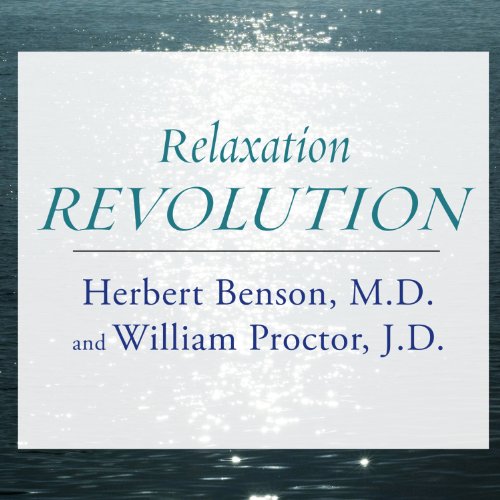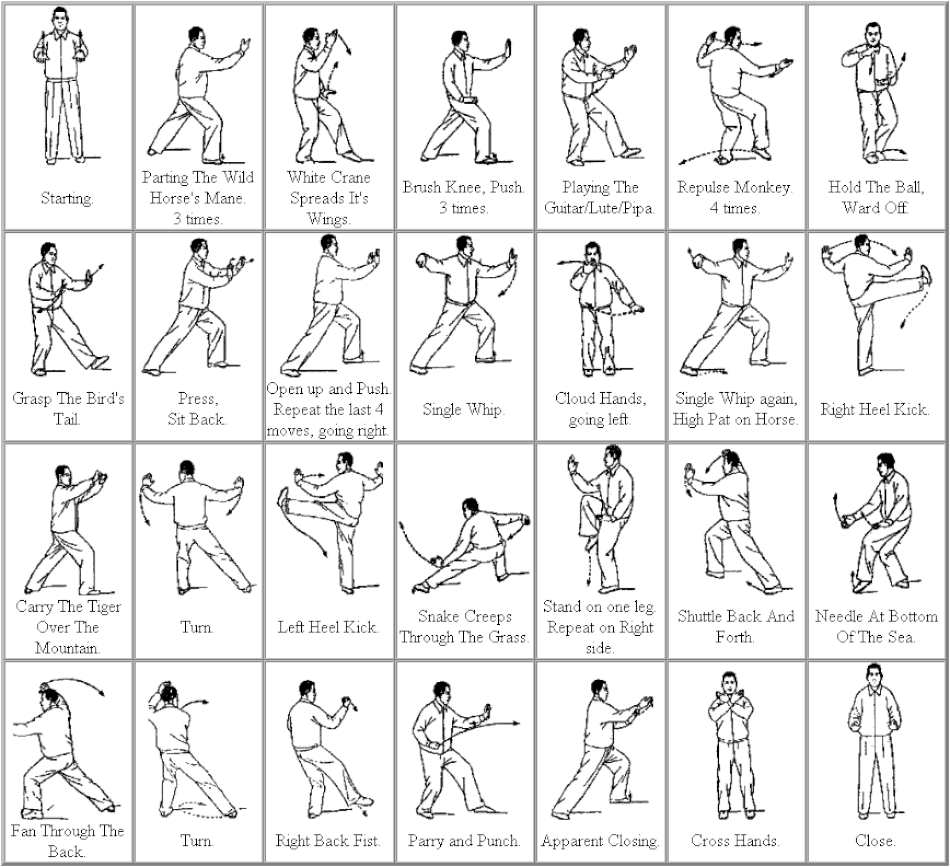Most tai chi styles offer at least two tai chi forms: short and long. Some styles like Yang have even categorized them into a multitude of sizes 18 – 24 – 48 – 83 – 108 – Tall – Grande – Venti… You get the picture. As a seasoned practitioner, are there benefits to knowing the tai chi short form and the tai chi long form? As a new practitioner, is it a waste of time to learn the whole tai chi short form or should you jump right into the long tai chi form? And for all of us, do we get the same health and physical benefits from the tai chi short form?
The tai chi short form is a condensed version of a style’s long form and includes all of the major tai chi movements and practical aspects such as correct posture, footwork, breathing, balance, and transitions between movements. It can have the same health benefits as the long form if practiced for the same duration.
New students often feel like they are caught between having to choose between learning something that seems manageable and potentially not getting the benefits out of their tai chi. And when I say “new” I mean new to my class. I have brand new students and 20+ year veterans who have just moved to the area or are picking their practice back up again. There is great value in learning the tai chi short form. We just need to know which style is the best for us and how to get the most out of our practice.
Let’s talk about the values of the different sizes of the tai chi forms. In this article I am going to motivate you to learn a short version of the form but also supply some physiological research as to why eventually pursuing the long form or doing the short form multiple times is a great idea.
We are lucky to have a TON of resources on the short forms of tai chi created in all of the styles. Just search for tai chi short form resources online.
How Many Moves Are in the Tai Chi Short Form?
I went to different tai chi school’s websites and also visited the main style pages and Wikipedia to get this answer. I found 17 answers ranging from 8 moves up to 56! On the ends of this spectrum there are lots of heated opinions saying that 8 is way too short and 56 is practically a long form so it misses the point.
On average, 13, 24, 37, and 48 were the most common number of moves in the different tai chi short forms. Yang Style 24 Short Form is by far the most practiced. Chen style Grandmaster Chen Xiaowang teaches a 19 movement form and his nephew Master Chen Bing teaches 13. How many moves a short form has is also related to standardizing certain forms like the tai chi 37 short form and 48 so they can be judged fairly in competition.
So you can see that there is no one answer. Grandmasters designed short forms to contain the essential teachings of tai chi. The number of moves is kind of irrelevant as long as correct posture and movements are transmitted and you get the health and physical benefits from practicing.
Benefits of the Tai Chi Short Form Versus the Long Version
The tai chi short form is a relatively modern invention designed to increase the number of people practicing tai chi and to make tai chi accessible to people with health limitations who can’t stand and move for 20+ minutes. It is a way for people to be interested in a tai chi form and finish it after a few months. It is a way for a weekend workshop to teach an entire form when a grand master is in town. It is a way for experienced tai chi practitioners to teach their friends who are interested so they have someone to practice with. It is a way to open the door to someone who is new to eastern thinking and tai chi so they can continue to learn qigong, meditation, or even the weapons form.
As a teacher, when we began teaching about 15 years ago we routinely had 2-6 students when were exclusively focusing on the long form. Now we teach the short form and our class averages 10-20 with about 25% learning the long form. So I think it is a win on both sides. If you are committed to learning or teaching the long form, these are key points you need to consider.
Benefits of the tai chi short form
- Easy teachable
- Increased retention of new students
- Easily to accomplish in 1 month (fast) to 3-4 months (average)
- Most of the main movements are contained in a short form and merely repeated in the long form
- Can improve your movement and balance with minimal investment of time
- Fun
Benefits of the tai chi long form
- Traditionally you are partaking in something great that expands across the centuries
- A physical workout
- Increased focus. Your mind can’t wander during the long form or you forget where you are
- Thorough stretching of all ligaments and sinews
- Greater repetition of important movements which results in greater facility
- There is a growing body of science that inadvertently defends/proves why the long form is superior
Is the tai chi long form better?
WAIT a minute! This sounds like the long form is superior. Is it? We have to remember that the centuries of knowledge that went into the development of tai chi exclusively focused on the long form. What you need to know if you are learning or practicing the short form is that many of the therapeutic effects of tai chi are based on the amount of time that you are practicing. I want to share research on this so that you understand that doing the tai chi short form can be equally beneficial but it has too be done slowly and repeated until you have been practicing for at least 15 minutes.
The tai chi long form takes physical and mental dexterity to learn and practice. New research shows that practicing for that length of time has dramatic effects.
Modern research supporting the practice of the tai chi form longer
Recent scientific breakthroughs are demonstrating that mind-body movement strategies can actually “switch off” or “switch on” gene activity associated with health and disease. Everyone is familiar with the “Fight or Flight Response” but researcher Richard Benson asked a very significant and unique question:
If your body can ramp you up to respond to physiological needs, can it also ramp down?
The answer is yes. People can reduce heart rate, stress, and biological markers present during trauma and tension. So how did they do it? Research on the body’s ability to slow down and relax was conducted by Herbert Benson M.D. and published in Relaxation Revolution.
The Relaxation Revolution

Can a human alter their health through relaxation techniques? Yes.
Benson’s studies began by employing experts in meditation and eastern practice to see if 1) their emotional states differed from the norm and if 2) they could actively change their states as measured by biological markers upon request. Yes: experienced meditators had healthier states and could alter biological markers such as mental states, breathing, sweat, and hear rate.
Can novice practitioners improve their health by doing the tai chi form? Yes.
After proving that biological markers could be moved, he created experiments to test un-experienced people. In these studies they used progressive relaxation techniques where a recording (the Olivia Recordings) led a person to concentrate on successive body parts. The goal was to arrive at a state which mirrors the relaxed state that we experience upon waking or is actively obtained by accomplished meditators. Novice practitioners achieved this state in 12-15 minutes and then were free to concentrate on whichever aspect of health they wanted to improve.
How does Benson suggest that we replicate the results?
In Benson’s book he goes on to say that you do not need to use the Olivia recording but recommends it if you don’t have another practice. Practitioners of yoga, eastern practices, and meditation all equally acquire this state. What was the constant in each set of studies was the time: 12-15 minutes were needed to achieve the healing state.
So how long does it take to complete the tai chi long form?
You guessed it: 12-18 minutes. Just enough time to incite the relaxation response. Secondly, styles like Chen Tai Chi routinely do the form two times back-to-back. Yep, about the same amount of time that Benson found was necessary to fully engage the relaxation response and then promote creativity or healing.
One reason that I love tai chi and the eastern arts is that I will undertake an activity because “I am told to” or “because that is the way it has been done for X-hundred of years.” So often these assertions are millenia ahead of the science that prove it beneficial.
Can I just do the tai chi short form twice and get to 12-15 minutes?
Definitely. You have put a lot of time into learning a tai chi form and can immediately benefit from Benson’s research by pushing yourself into the 12 -15 minute window. And of course, if you meditate or do yoga, apply this to your practice. It is the window of time that is important.
Why would I learn the tai chi long form then?
I don’t want this article to be misinterpreted as permission to do away with the long form. The long form takes physical and mental dexterity to learn and practice. There is a higher education embedded in the longer sequence that we are only on the cusp of understanding. Movements are repeated but sequences vary in a specific way. Finishing the long form feels like having received a gently but intelligent massage of the entire body. Additionally, if you suffer from a racing mind or difficulty concentrating then the long form is for you. Giving something physical your full attention for 15 minutes enables one to focus throughout the day more easily.
What Style of Tai Chi Short Form Should I Learn?
Are you in!? Are you ready to learn or improve your short form? With so many short forms, it is hard to know which style to choose. To be honest, it comes down to two things. Firstly, it’s a personal choice about what you want to do and what form actually looks interesting to you. I have included examples here of some of the best. Secondly, even though you might prefer a style, if you have great teaching in your area, regardless of style, go that route. Being able to find a community and great instruction is way more important. Lastly, if you are not sure and don’t have classes near you, the easiest and least expensive way to learn the most popular form is the Yang 24 Form Online Course.
Here are examples of each other the most popular short forms and links to find out more about each style represented in the video.
Yang Style Tai Chi Short Form
The execution of the movements in this short video is perfect. Yang is know for having a greater balance between both sides and this Yang Style tai chi short form shows it well.
Yang Style Origin, History and Forms
Chen Style Tai Chi Short Form
Here is Grand Master Chen Xiaowang performing the Chen Style TaiJiQuan 19 Form.
Chen Style Origin, History and Forms
Cheng Man Ching Tai Chi Short Form
What is the best example of the Cheng Man Ching Tai Chi Short Form? How about Grand Master Cheng Man Ching performing the 37 move form himself!
Cheng Man Ching Style Origin, History and Forms
Wudang Tai Chi Short Form
This is a beautifully filmed and beautiful version of the Wudang tai chi short form.
Wudang Style Origin, History and Forms
Wu Style 13 Short Form Tai Chi Chuan
Wu Style Origin, History and Forms
Sun Style Tai Chi Short Form
Here is a 13 move example of the Sun Style Tai Chi Short Form.
Sun Style Origin, History and Forms
A Beginners Guide to the Tai Chi Short Form
If you are looking for a beginners guide to short form tai chi I want to tell you about a course that has been launched on a learning platform called Udemy. I think it is the best way to learn the tai chi short form if you do not have a class nearby. They teach the Yang Style 24 short form so it is also the most practiced short form. This is important because you are more likely to find a class that teaches this style or buddies to practice with.
Check it out here: Yang 24 Form
Further reading when deciding what technology to use: An Argument Against Using a Tai Chi App and a Better Alternative





This is an excellent post. The subject matter is well covered and well written. It gives one a lot to thing about. I will try and be more aware of my “well being” now as I continue working on and practice the long form.
This is very informative, and great for students who ask: “Why do I
have to do all these steps together?” I teach both adults and seniors, and to each I reply: “So who wants to stay in one place?”
This is wonderful learning, and if they did it thousands of years ago, you can certainly do it today on Cape Cod.”
Very well put thank you. Like Joel I think it’ll interest my students.
And I am sure that Cape Cod offers quite the environment and view to make the extra minutes seem enjoyable.